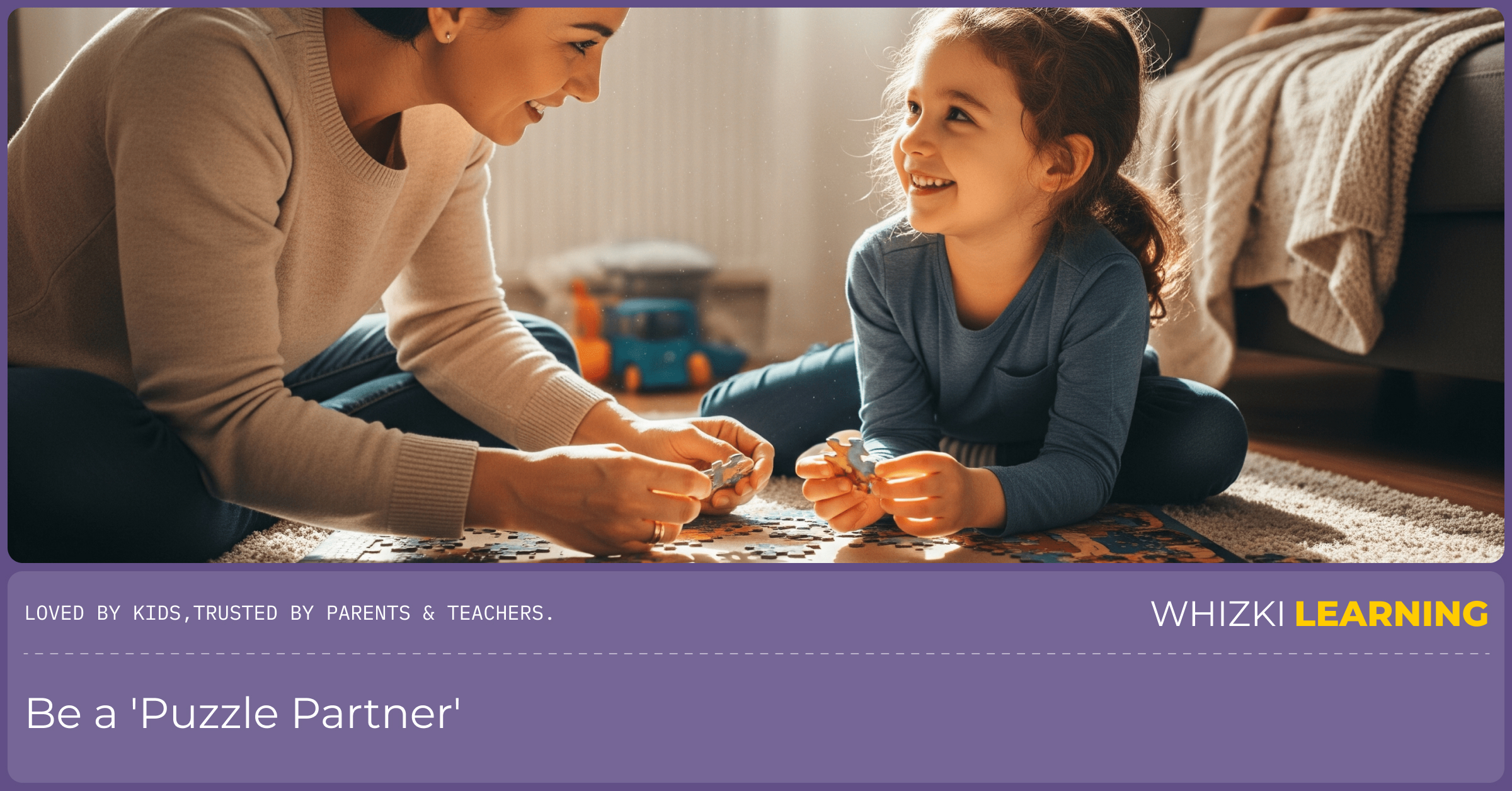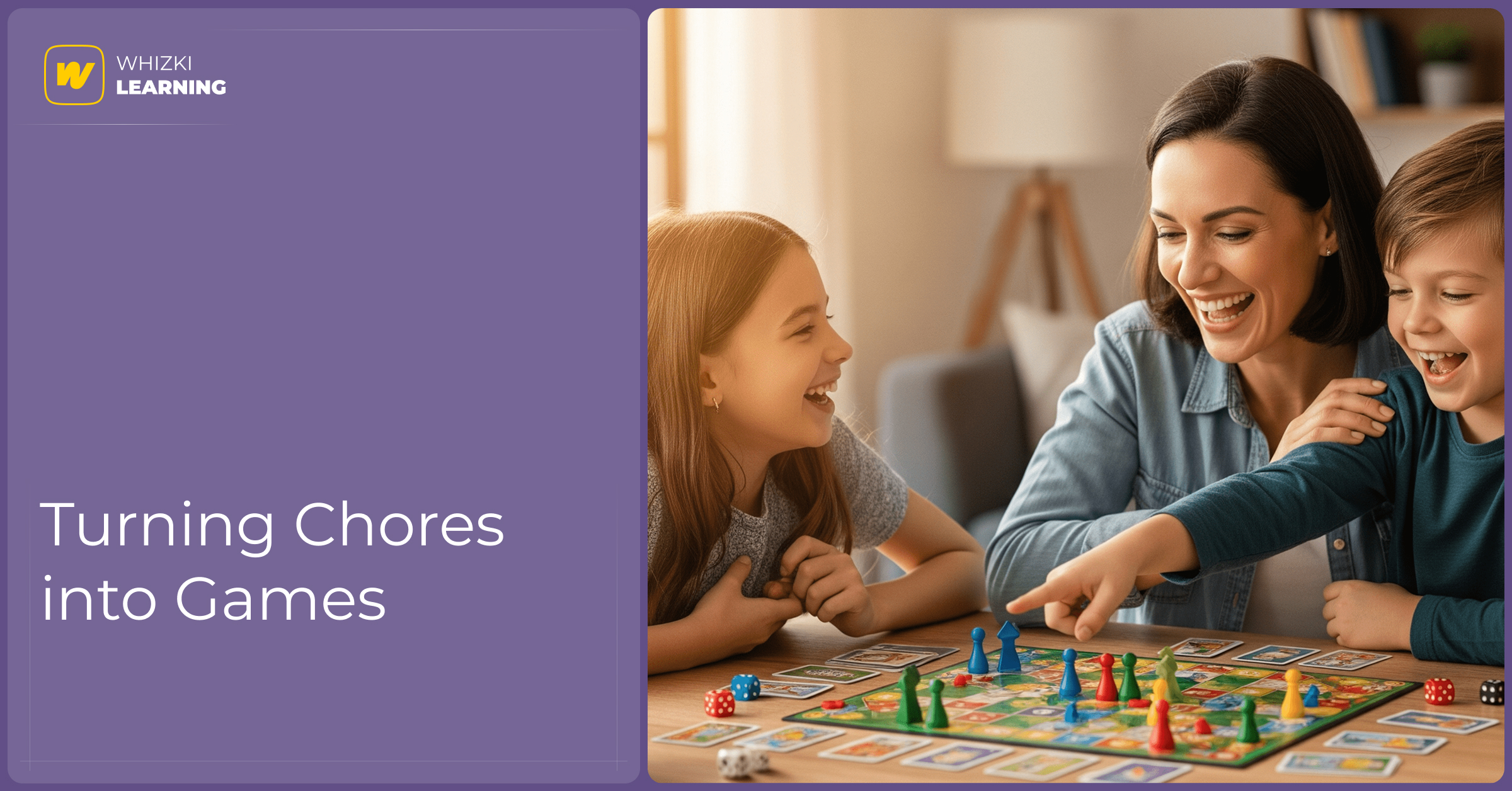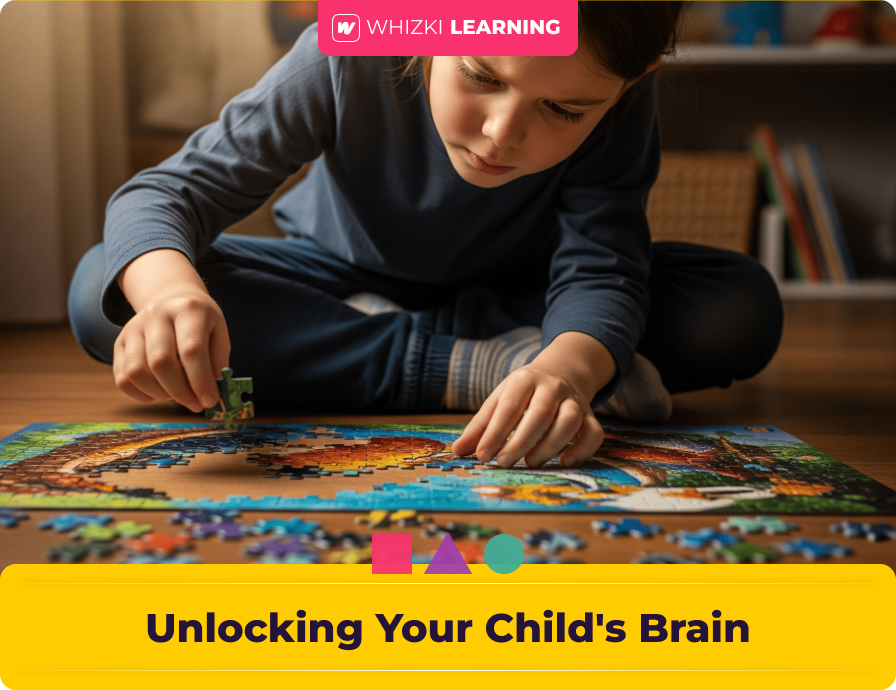Hey there, parents! In a world where kids are used to instant gratification, puzzles and riddles can seem slow and even a little boring. But it's in this slow, deliberate process that the real magic happens. At Whizki Learning, we believe that the best way to teach a child to think is to give them a problem to solve. This isn't just a game; it's a critical form of screen-free learning that prepares them for success in school and in life.
This guide will show you how to turn puzzles into a fun, family activity and why these seemingly simple games are a powerful tool for brain development. Let's pull back the curtain and see how riddles turn your child into a little genius.
Chapter 1: The Art of Problem-Solving
Every time your child tries to piece together a jigsaw puzzle, navigate a maze, or find the answer to a riddle, they are using problem-solving skills. They learn to analyze the challenge, develop a strategy, and be persistent when things don't go their way. This isn't just about finding the right answer; it's about learning the process of thinking itself. This is directly related to what we discussed in our article about the power of unstructured time, because it’s in these moments that a child is forced to come up with their own solutions.
How to Build Problem-Solving Skills with Games:
Choose the Right Level: Make sure the game isn't too easy or too hard. If it's too easy, they'll get bored. If it's too hard, they'll get frustrated.
Be a 'Puzzle Partner': When your child is stuck, don't give them the answer. Instead, ask guiding questions: “What have you tried so far?” “What could you try next?” or “What if we tried it this way?”
Praise Their Effort: Don't just praise them for finding the answer; praise their persistence. “You worked so hard to figure that out! I love that you didn’t give up.”

Chapter 2: Boosting Focus and Concentration
In a world full of distractions, the ability to focus is a superpower. Puzzles and riddles require a child to pay attention and be patient. This almost meditative process helps them learn how to concentrate on a single task for a long period of time, which is a crucial skill for academic success. It's a perfect complement to our fine motor skills workbooks, which also require a high level of concentration.
How to Use Puzzles to Boost Focus:
Start Small: Don't give a child a huge puzzle if they're just starting. Begin with 4-5 pieces and gradually increase the number.
Create a 'Focus Zone': Designate a quiet spot with no distractions. This helps them get into a state of 'flow.'
Set Realistic Expectations: Let them work on the puzzle for 5-10 minutes, then take a break. The time will naturally increase as they get older.
Chapter 3: Family Bonding Through Play
Puzzles aren't just for solo play. They can be a fantastic way for families to connect. When you work on a puzzle together, you're teaching kids about teamwork, communication, and sharing responsibility. This creates moments of connection and shared memories that will strengthen family bonds. It's one of the best examples of "positive parenting" in action.

Puzzles are more than just a way to pass the time; they're a way to build a mind. They teach our kids patience, persistence, and the joy of solving a tough challenge. Our mission at Whizki Learning is to support you in this journey. Our educational workbooks are designed to complement these activities, turning every moment into a learning opportunity. Ready to start puzzling? Check out our full collection of educational workbooks and activities today!






